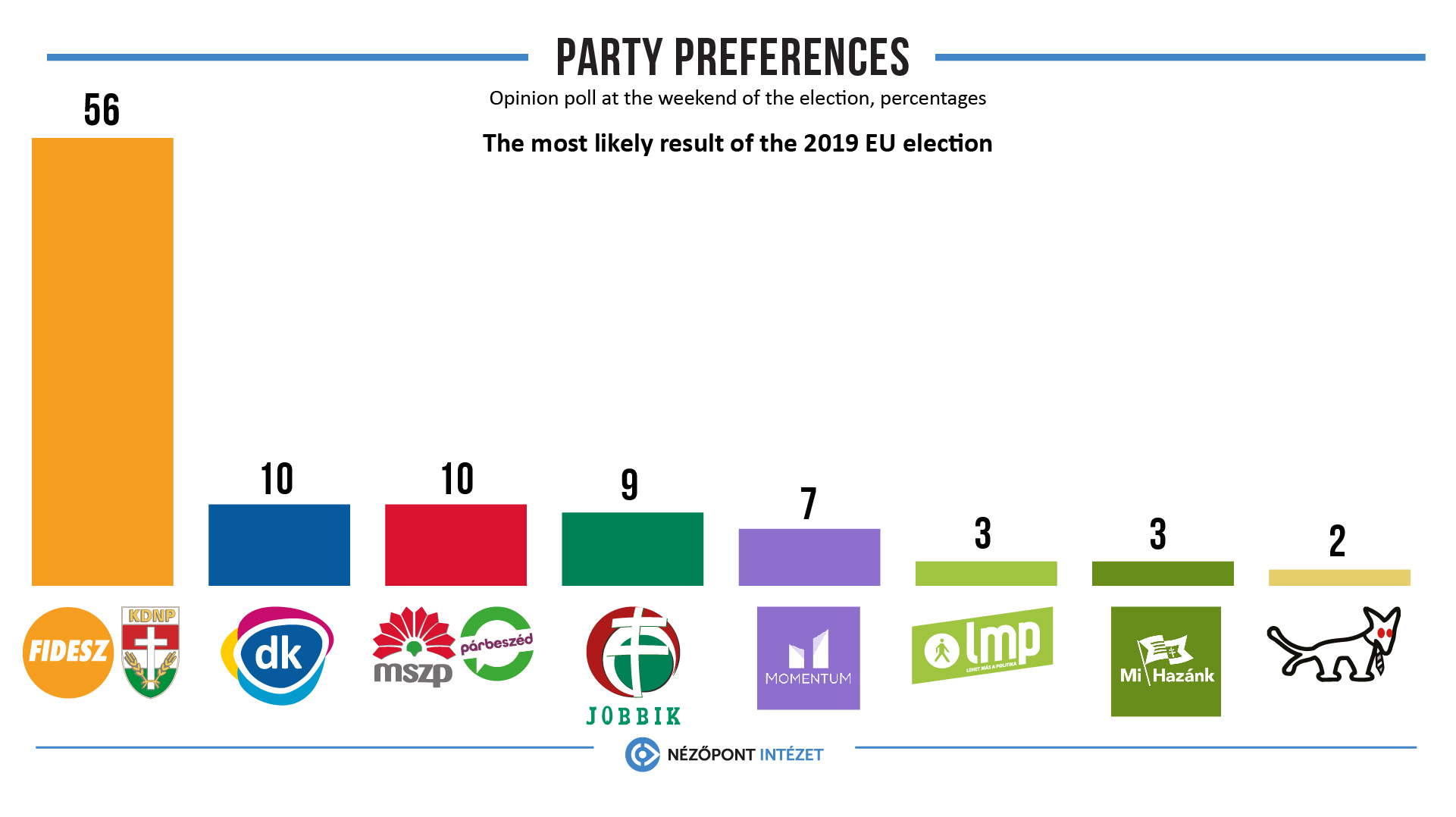Fidesz-KDNP may have acquired the absolute majority of votes and two-thirds of the mandates, reveals a telephone poll conducted by Nézőpont Intézet on election weekend.
Fidesz-KDNP, the DK, MSZP-Dialogue, Jobbik and Momentum have gained representation in the EP. Fidesz-KDNP can expect 14 mandates, DK, MSZP and Jobbik 2 each, and Momentum one.
According to a survey conducted by Nézőpont Intézet on the European Parliamentary election weekend, Fidesz-KDNP have got 56 percent, while the Democratic Coalition and the MSZP-Dialogue alliance 10 percent each, Jobbik 9 percent, and Momentum 7 percent. The LMP and Our Hungary have gained 3 percent, and the Two-tailed Dog Party 2 percent of the votes. As a result, Fidesz-KDNP have acquired two-thirds or 14 mandates in today’s election. Government parties have been mobilising well, greatly improving their performance compared to last year’s national election and the last EP election five years ago.
Power ranking within the opposition camp may be down to a few votes. The symbolic loser of the election is Jobbik, but the MSZP-Dialogue alliance may also fall below 10 percent. The Democratic Coalition and MSZP-Dialogue (10 percent each) are also ahead of Jobbik, no longer the strongest opposition party, with its popularity down into the one-digit realm (9 percent). Compared to their 2018 parliamentary results, Momentum (7 percent) and LMP (3 percent) have swapped seats, and for the first time in their history, with the latter, for the first time in it history, failing to reach the threshold to obtain mandates. The Our Hungary Movement has also failed to secure a mandate (3 percent) along with the Hungarian Two-Tailed Dog Party (2 percent). It follows from the opposition’s results that there are four parties (DK, MSZP-P, Jobbik, Momentum) now fighting for the second place, which may lead to internal conflicts for the opposition before the municipal elections and may disrupt previously concluded agreements.
Methodology
Nézőpont Intézet conducted the poll on election weekend based on telephone interviews with 1,000 respondents rather than an exit poll. The sample is representative of the adult population 18 years and over by gender, age, region, settlement type and educational level.
